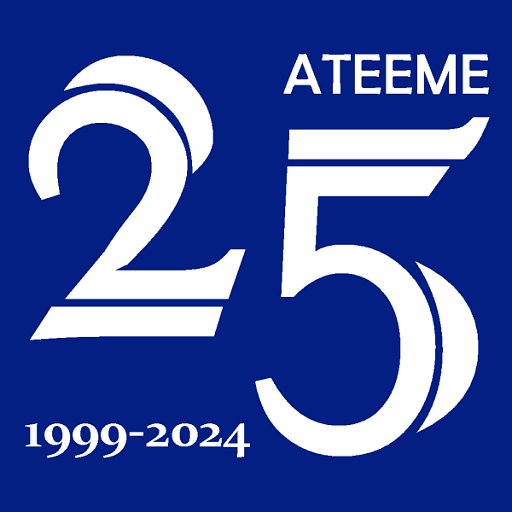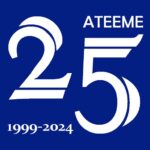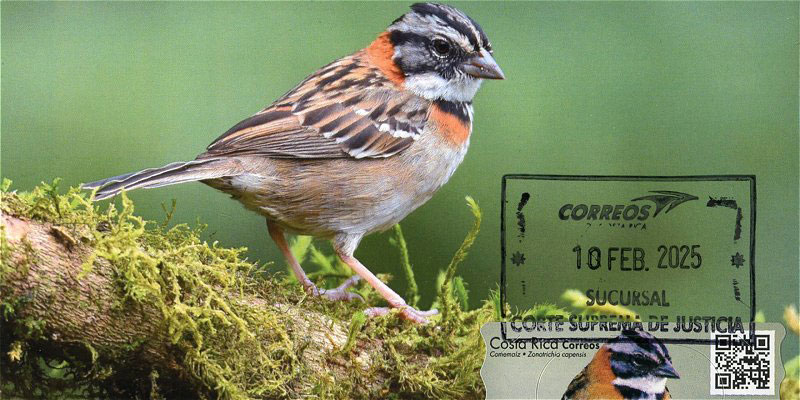The variable value stamp issues from Costa Rica are little known to philatelic collectors, beyond those interested or specializing in our field of study. Unlike many other countries, Correos de Costa Rica has kept these issues strictly for postal use, and since the beginning of this century these stamps have been used extensively in the Correos de Costa Rica branches for the franking of postal items. In Costa Rica, when a customer goes to a Correos branch to mail an item, the postal employee issues one of these stamps with the corresponding face value.
For over 20 years, Correos de Costa Rica has been issuing rolls of labels with about twenty designs, which have been used in/by various types of equipment for the printing of variable value stamps. All this has been duly documented in numerous articles published in our previous website and the VARIABLE magazines.
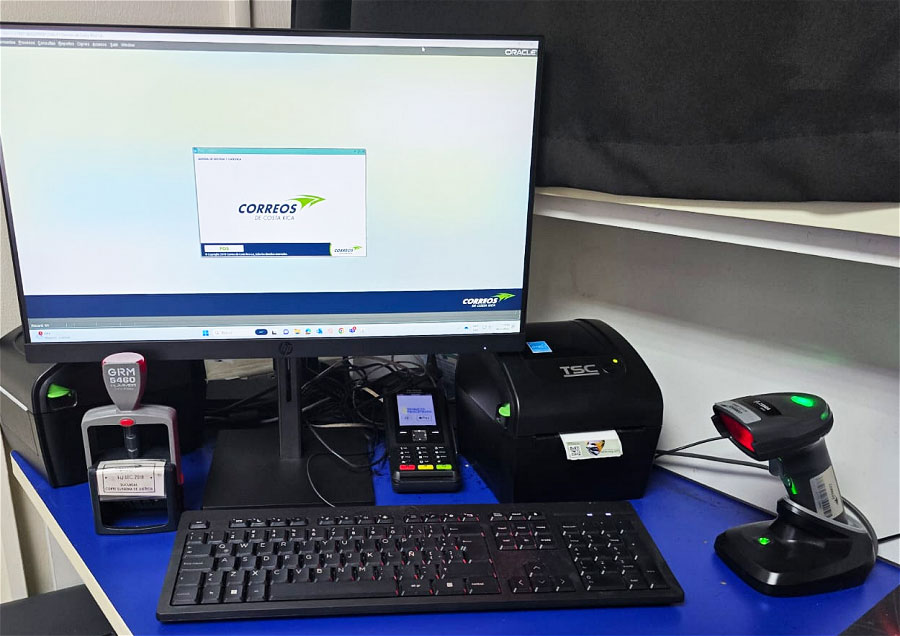
Apart from the trials with the Klüssendorf stamp vending machines in 1993, branches were equipped in 2002 with Epelsa franking scales, replaced 10 years later by computer systems equipped with various models of direct thermal printers; Datamax O’Neil, Zebra, and very recently, TSC. All these changes have led to printing varieties and changes to the information printed on the stamps.
Although intended for postal and not philatelic use, it is important to highlight that Correos de Costa Rica has always paid special attention to this type of stamp issue, being true ambassadors and promoters of the country, with very nice illustrations initially depicting the country’s tourist attractions and since 2017 focusing on its fauna (see article, also published in VARIABLE 61, and article).
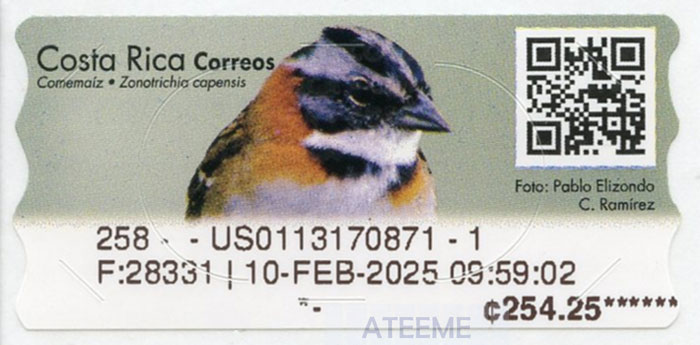
The sixth issue of this series released in 2017 is illustrated with a photograph of the Comemaíz or rufous-collared sparrow (Zonotrichia capensis) by Pablo Elizondo, a local ornithologist and photographer.
The rolls of 1,500 thermal self-adhesive labels on white siliconised backing paper are produced by R. R. Donnelley de Costa Rica, S.A., printed by flexography. The size of the label is 57 x 27 mm., with die cut ‘wavy’ vertical edges as a security measure against counterfeiting and / or reuse. The labels also incorporate the continuous security micro-printing ‘CORREOS DE COSTA RICA’ in the design area, visible against the light when viewed at an angle or with a UV lamp. A QR code in the upper right-hand corner directs one to the Correos de Costa Rica website. Unfortunately, for collecting, the thermal paper used in its manufacture is of low quality, which thus compromises the longevity of the thermal printing of the stamp data.
The rufous-collared sparrow is a very common bird in Costa Rica. Also known in various countries as pirrís, chingolo, tico-tico, chincol or copetón, depending on where one is. It is a neotropical passerine bird similar to the house sparrow (Passer domesticus), although it can be distinguished by its grey head with black stripes.
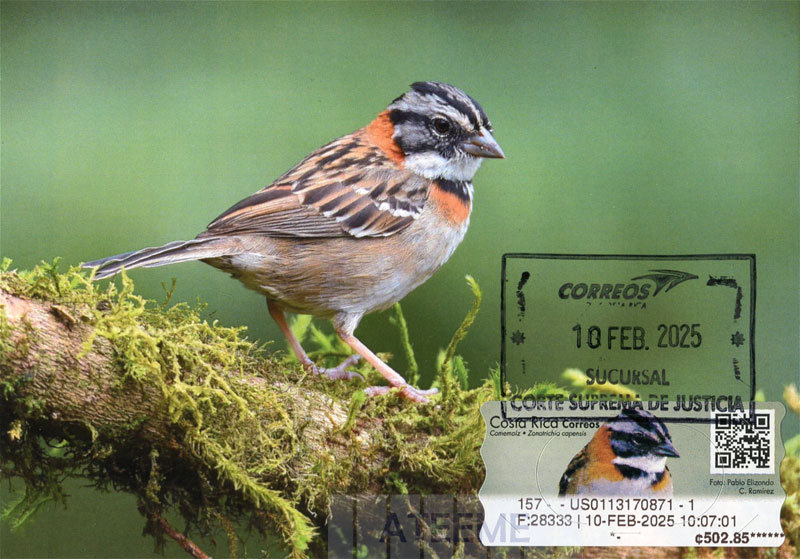
This new design was produced in March 2024 and the first known date of its use at a postal branch was in early May. As with previous designs, these issues do not have an official date of issue or first day of use. The labels are produced strictly for postal purposes, and their manufacture, distribution and use in branches is determined by operational needs.
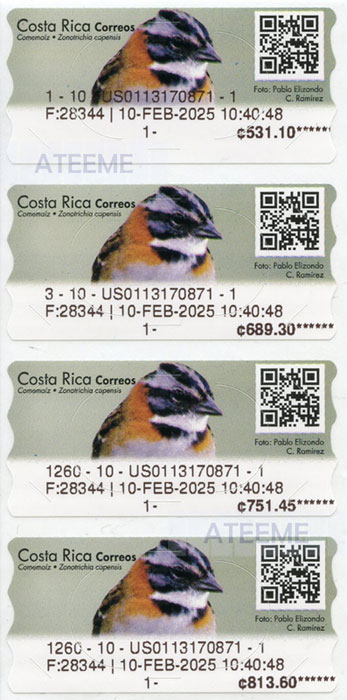
The computer system installed in the Correos de Costa Rica branches only prints variable value stamps corresponding to the service required with the current postal tariffs.
The information printed on the stamps is arranged in three rows. The top line contains the service code, the weight, the user code (US0 + identity card), and the point-of-sale number. The middle line has the invoice number (F:), the date and time of issue whilst the bottom line, contains the stamp number (in the case of multiple stamp purchases with the same face value numbered from 1- to 9-, and *- from the tenth stamp onwards). On the right of the label, is the face value to two decimal places in a 14-digit format (with values made up using asterisks). The value is preceded by an incorrect currency symbol the “Colón” with a single vertical bar (₵ instead of the correct symbol with two diagonal bars, ₡).
The image on the left depicts a four-value set, with the basic domestic and international postal tariffs in force since the last tariff change in February 2020 (see table of tariffs).
(English edition rewritten by J. Gareze – May 2025)
Access to this site, and to the website in general, is monitored and its contents are protected by copyright.
The unauthorized copy of the text and / or images is prohibited
